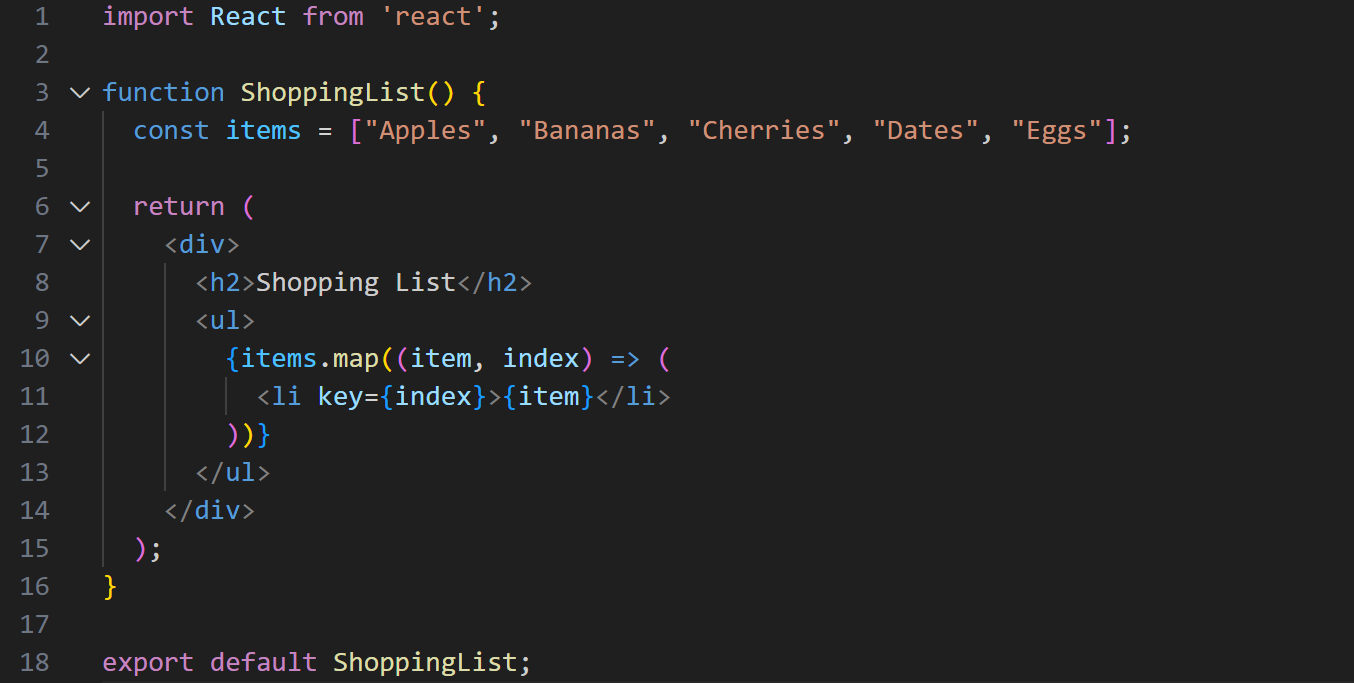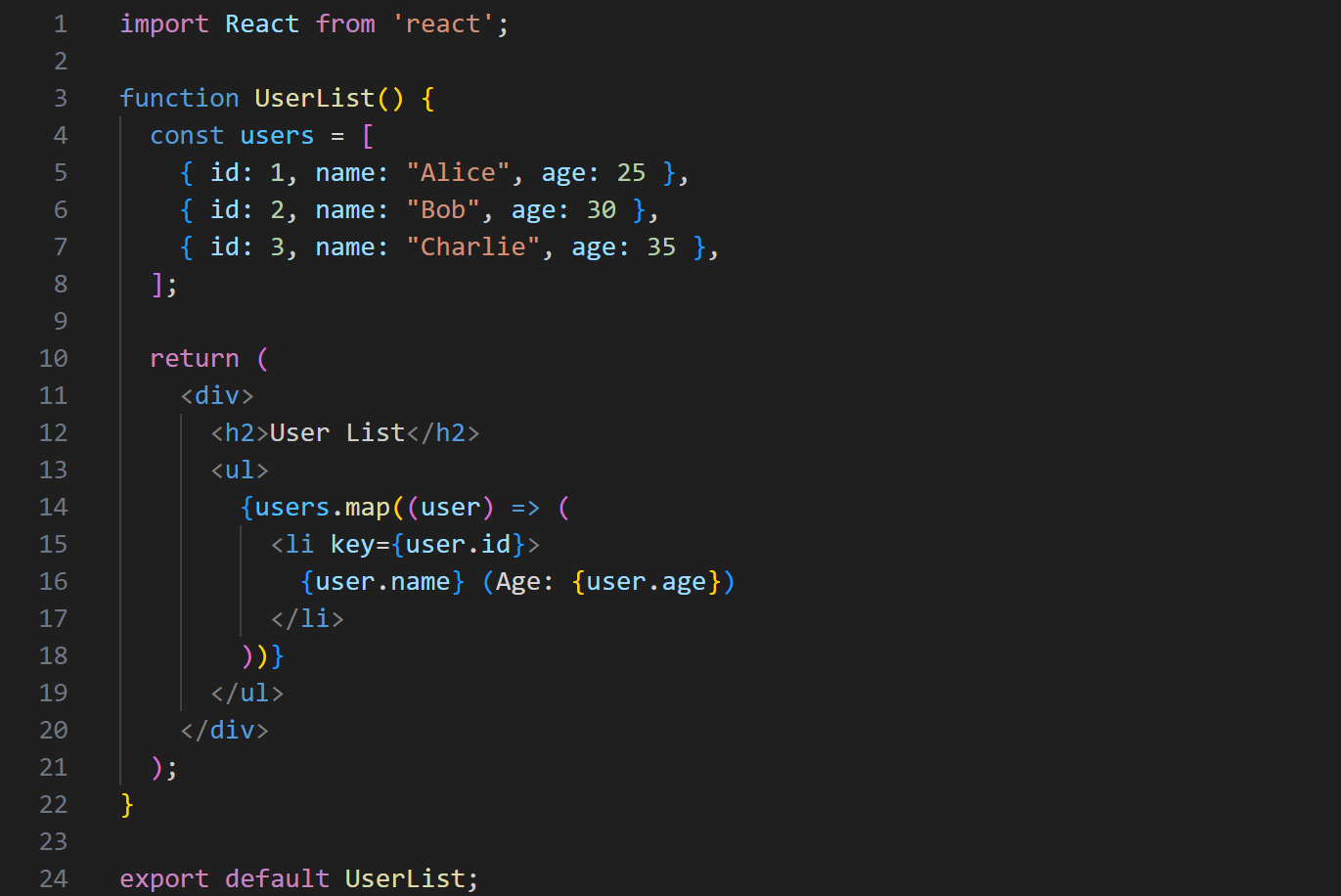In React, the map() method is a powerful tool for rendering lists of elements dynamically. It is part of JavaScript’s array prototype and is commonly used to transform an array of data into an array of React elements. This approach is essential for creating dynamic and reusable user interfaces.
How Does the map() Method Work?
The map() method iterates over an array, applies a callback function to each element, and returns a new array with the results. In React, it’s often used to loop through data arrays and generate JSX elements for rendering in the DOM.
Example: Rendering a List of Items
Let’s see how the map() method can be used in a React component to display a list of items dynamically:

Key Points in the Code:
- Data Array: The items array contains the list of items to display.
- Mapping Over Data: The map() method transforms each item in the array into an element.
- Unique Keys: A key prop is assigned to each element for efficient rendering and updating by React.
Key Points in the Code:
React’s map() method can also handle more complex data structures, such as objects.

Advantages of Using map() in React
- Dynamic Rendering: Easily generate elements based on data, making UIs flexible and interactive.
- Reusable Components: Combine map() with custom components to create scalable designs.
- Simplified Code: Reduces the need for repetitive code by leveraging array transformations.
Memetic Solutions: Transforming Data into Experiences
At Memetic Solutions, we utilize React’s powerful tools like map() to turn complex datasets into engaging and user-friendly interfaces. Whether it’s rendering lists, tables, or dashboards, our expertise ensures seamless data transformation and dynamic UI components that cater to our clients’ unique needs. Let us help you build scalable, efficient, and visually appealing applications that bring your data to life.

